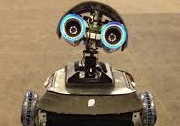As SAP, along with our partners, begins to build on the vision of the Intelligent Enterprise, I wanted to look back on what has made this possible. Obviously, the convergence of Big Data, IoT, Cloud Computing, and Mobility has created the perfect storm, in terms of bringing all the technology pieces together that are causing disruption and the need for transformation in the digital era.
But I’m going to make a bold statement—I absolutely believe the introduction of SAP HANA, just under 10 years ago, is a critical piece of the equation. This in-memory, relational database…which offers so much more…delivers (according to a recent SAP strategy document) “…the collection, connection, and orchestration of data as well as the integration and extension of processes within integrated applications.” Bottom line – SAP HANA handles big data better than anything else on the market and that has made all the difference for SAP, our partners, the marketplace, and the innovations based on the success of SAP HANA.
But rather than explain the technology or provide facts and figures to prove my point, I’d like some of our key partners to tell their stories.
VIRTUSTREAM SUPPORTS HUMAN PROGRESS
Virtustream provides cloud services for complex, mission-critical applications. Given that they serve the enterprise market, they have a lot of expertise around legacy systems and are experts at migrating and managing those systems with cost-effective infrastructure. According to Christina Colby, Senior Vice President, Strategic Alliances, “the key to success in the industry is fast time to market, which is why Virtustream combines enterprise-class cloud infrastructure and top-tier managed services with an industry-leading cloud management platform.”

Close up of a coworkers working together on a project
By delivering a powerful, fast solution that’s ready for the enterprise, Virtustream gives customers a cloud that works for them and the assurance that their mission-critical legacy systems are secure, and running at top performance.
In addition, Virtustream gives customers room to disrupt, transform, innovate…and ultimately gain a competitive edge, because they don’t have to worry about their legacy IT systems. Virtustream customers are even now disrupting their own businesses.
- The company recently announced a strategic partnership with a Middle East service provider, to deliver enterprise-class “pay-as-you-grow” services that will help customers with their smart city initiatives and enable citizens, residents, and guests of the region to improve their quality of life.
- In addition, a biotechnology company, focused on genomic applications that serve academics, pharmaceutical development, and research needed to quickly deploy a new ERP system. Virtustream delivered hosting and services for SAP S/4HANA and Hybris on SAP HANA. Again, enabling companies to advance their IT and business in support of human progress.
- Finally, with Virtustream’s recent announcement of SAP Data Hub Service in the cloud, the company helped a major consumer packaged goods company integrate data from many different sources including SAP S/4HANA, SAP BW/4HANA, Hadoop. The service enables the company to make data driven decisions, gain insights to improve outcomes, and increase operational efficiency – all in an effort to better support their customers – and improve the world they service.
Virtustream—together with SAP and SAP HANA—provides customers with real solutions to tackle their most difficult IT challenges. They look forward to continuing their innovation with SAP, ensuring customers’ digital transformation journey is seamless and empowering.
ITRON CREATES A MORE RESOURCEFUL WORLD
Itron’s purpose is to create a more resourceful world, by transforming the way utilities and cities manage energy and water. With over 8,000 customers in more than 100 companies, Itron delivers one of the largest IoT solutions in the world – over 190 million intelligent devices deployed in the field.

Taipei, Taiwan — River — Image by © Imagemore Co., Ltd./Imagemore Co., Ltd./Corbis
Jay Millar, Director of Software and Services Sales, talked about Itron’s industry – Utilities and Smart Cities. “Think about it—utilities are going through a disruption Tsunami right now.” Jay went on to list the challenges facing the industry, including:
- Renewable power (with distributed energy production placing new challenges on the management of electricity distribution systems)
- Reduction in water loss after processing. Forty percent of water is lost after purification.
- Real-time gas pressure and quality monitoring to increase safety for gas utilities
- Increased customer expectations to understand their usage and empower them to make resourceful choices
- Regulatory changes
- Aging infrastructure and precious resources
Itron is developing solutions that enable a distribution network to adapt and react to changing conditions in real time. This network must have the intelligence to do what it can, when it needs to, and know when it needs help from the back office. This is the difference between “smart” and “active” solutions – Itron’s “active” solution is essentially the Intelligent Enterprise for utilities. And Itron is providing business outcomes that deliver to utilities’ and smart cities’ bottom line.
Itron chose SAP and SAP HANA, not only to provide a common data model for customers and simplify their solution, but because there’s so much more to SAP’s real-time database. Utilities collect a massive amount of data and there is no better real-time database than SAP HANA to handle this load.
SAP HANA seamlessly facilitates the utilization of both meter and billing data and creates links with other data sets such as, geospatial, weather, demographic, deployed assets and others, which are critical to identify inefficiencies and optimize utility operations and customer insights.
Itron believes their solution could help SAVE the utility industry, by giving them the platform to transform their business, especially as new power generation laws are passed. For example, utilities in California have the opportunity to re-invent themselves due to the law recently passed that makes solar mandatory in every new home.
In addition, the industry has been talking about innovation in cities for over a decade. Itron now has the technology to deliver these solutions alongside SAP. Together, Itron and SAP are creating a more resourceful world.
BIGID REDEFINES PERSONAL DATA PROTECTION AND PRIVACY
Privacy is a defining 21st century problem. To do privacy effectively, you first need to know what and whose data you have, as well as the content and context. Once you solve the protection and privacy problem – you can solve the data governance problem and get critical insight around the data you have, where it resides, etc.
As technology companies are all too aware, the question of privacy and sensitivity of data is critical. Companies that don’t know what data they have around their clients or employees are at risk, because they can’t protect data they don’t know about. Not knowing doesn’t make data invisible…it makes it vulnerable. So, having insights around data is critical for the security and privacy of that data.
With major new regulations in Europe introducing significant penalties around privacy, data is the most important asset the modern digital enterprise has. BigID gives organizations a way to get value from that data while delivering privacy and protection and making enterprises effective stewards of their information.
BigID is the first major innovator to help companies find and understand their data and to leverage the best of machine learning and identity intelligence to give organizations a way to satisfy regulations like GDPR, but also gain a competitive advantage from the data organizations they gather and use.
From a technology perspective, BigID wanted to partner with a company that has the technological relevance and depth they needed. Apart from the common footprint of clients, they also had to have agile innovations built for purpose and the ability to plug their technology into the existing landscape, bringing immediate value to customers.
When you get right down to it, SAP’s customer base is BigID’s customer base – so it made sense from that perspective to look at their business model and technology. BigID wants to give companies a more automated way to satisfy privacy requirements like personal data rights while ensuring data security and effective data governance.
SEELOZ USES ARTIFICIAL INTELLIGENCE TO SAVE THE WORLD
The US and other developed countries currently waste up to 30% of all food and medicine produced. This translates into $100B annually, just in pharmaceutical waste in the US alone, and that’s a scary number. And this waste comes typically in four forms:
- Expirations
- Overstock
- Stock outs
- Cross-warehouse movements
The question is, why so much waste? We’re supposed to be at the forefront of technology maturity, but current food and healthcare supply chains fail to accurately forecast our demand. What makes things worse is the problem is occurring across all food and healthcare value chains. Manufacturers are battling to pace their production in a way that fits market demand. Distributors struggle to time and size procurement and can’t accurately stock warehouses to fulfill demand. And providers, including hospitals, supermarket and pharmacy chains are hardly able to determine demand from customers.
If we dig deep to get to the root cause of the problem, we can see the disconnect between ERPs and other systems that manage consumer data. In healthcare for example, hospitals implement two families of software systems: ERPs (and other operational systems of the same nature) and Electronic Medical Records. The problem is these systems don’t talk to each other, making operational decisions—particularly those related to procurement and inventory management—without a solid understanding of patient needs. Surprisingly, the same disconnect exists between Point of Sales and ERPs for retailers, distributors, and even manufacturers.
It’s an almost impossible problem to solve, but Seeloz absolutely believes Artificial Intelligence (AI) is going to save the world by solving problems that are beyond human capacity.
Let’s run the numbers. The supply chain team at a typical healthcare system must regularly procure about 100,000 to 250,000 surgery, pharmaceutical, and consumable goods from hundreds of different suppliers. Once they receive their orders, the team must then decide how to store each item between the main hospital warehouse and the numerous points of use across the hospital (ER, labs, clinics, etc). The complexity becomes exponential for healthcare systems with multiple facilities. In the world of inventory management systems, this translates into setting around 1-2M parameters per hospital location (PAR levels and recorder quantities) and this is exactly the type of problem in which AI-Driven Automation thrives.
While Seeloz spent a tremendous amount of time making their sure solutions were truly embeddable in supply chain workflows, they also needed a strong partner to:
- Empower transactional systems for target clients
- Establish a huge cloud capable of carrying all the ERP, EMR and POS data of the world,
- Provide a strong in-memory database that could deliver the results of automation in near real time
- Inspire a deep trust in clients and be viewed as the major catalyst for the Intelligent Enterprise across the world
Seeloz claims they couldn’t find a better partner than SAP. They now run their solutions on SAP Cloud Platform and seamlessly embed SAP HANA to help customers minimize waste in food and medicine. Together with SAP, Seeloz and AI will minimize waste and save the world.
SAP HANA PROVIDES THE FOUNDATION
As each of these partners demonstrate, being successful in the digital era requires a completely new way of thinking. And just as our partners are disrupting the standardized thinking and traditional practices within their industries, SAP’s introduction of SAP HANA turned the database world on its head, setting the groundwork for the introduction of SAP S/4 HANA, SAP Cloud Platform, and now HANA Data Management Suite.
The Intelligent Enterprise is a vision that has its roots in the introduction of SAP HANA. This in-memory database provided the foundation for the inspiring innovation that came afterward. As SAP—together with our partners—works to realize the vision of the Intelligent Enterprise, the legacy of HANA guides our progress and secures our future.

The post Setting the Stage for the Intelligent Enterprise appeared first on SAP HANA.
source https://blogs.saphana.com/2018/06/18/setting-the-stage-for-the-intelligent-enterprise/







 DC persistent memory.
DC persistent memory.



